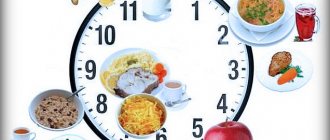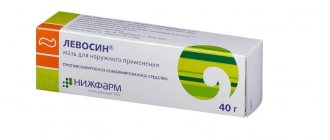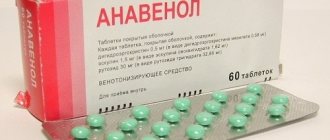Synthetic hypoglycemic oral antidiabetic agents are medications whose main function is to normalize blood glucose levels and alleviate the condition of patients with diabetes.
They achieve this in two ways: either they promote increased production of insulin by the pancreas, or they increase the sensitivity of tissues to this hormone. In addition, with such a diagnosis, additional medications are often prescribed to reduce the symptoms and consequences of the disease (to normalize blood pressure and weight, cleanse blood vessels, etc.).
Which tablets the attending physician prescribes depends on two factors: the type of diabetes and its clinical picture.
Tablets to lower blood sugar levels.
September 28, 2021
9867
4.3
5
Content
- Types of diabetes
- Causes of type 2 diabetes mellitus
- How to choose diabetes pills
- Top 5 diabetes pills
- Diabetes
- Siofor
- Januvia
- NovoNorm
- Glucobay
To treat diabetes, it is not necessary to regularly inject insulin. In many cases, it is enough to simply lead a healthy lifestyle and take special medications. Let's figure out what types of diabetes there are and what pills doctors prescribe.
Diabetes mellitus is not one specific disease, but a group of diseases in which the metabolism in the body is disrupted (in particular, carbohydrate metabolism suffers).
Types of diabetes
There are several types of diabetes.
- Diabetes mellitus type 1.
Usually this disease develops at a young age (up to 30-35 years). A feature of this type of diabetes is insulin dependence. Symptoms of type 1 diabetes: increased appetite, but weight loss against this background, frequent urination, constant thirst. With this type of diabetes, carbohydrate metabolism is impaired, and the pancreas produces too little insulin. - Diabetes mellitus type 2.
This diabetes is non-insulin dependent. Most often, the disease develops in old age. Type 2 diabetes is often inherited. This kind of diabetes requires a special diet, physical activity (moderate) and strict adherence to the advice of your doctor. - Gestational diabetes.
This type of diabetes occurs in pregnant women and usually goes away after childbirth. Sometimes gestational diabetes can negatively affect the fetus or recur after a few years. - MODY-diabetes.
This kind of diabetes is rare; the disease occurs in 5% of diabetics. Develops at an early age. In MODY diabetes, a person has a very low need for insulin. The disease is considered an intermediate stage because it has features of the first two types of diabetes.
Treatment of diabetes depends on what caused it, how severe the disease is, what chronic diseases the person has, and what his age is. Tablets for diabetes, taking into account all the above factors, can only be prescribed by a doctor.
Causes of type 2 diabetes mellitus
There are certain factors that influence the occurrence of diabetes.
Some metabolic disorders in the body can increase the risk of disease. Among them:
- presence of type 2 diabetes in close relatives;
- obesity or overweight;
- poor nutrition, an abundance of fatty or too carbohydrate foods in the diet;
- lack of physical activity, sedentary lifestyle;
- age factor;
- high blood pressure;
- impaired glucose tolerance (slight increase in blood sugar);
- gestational diabetes in the past;
- malnutrition during pregnancy.
In recent decades, due to changes in diet and physical activity, urbanization and the fast pace of life, the number of people with type 2 diabetes has increased sharply.
Types 1 and 2 diabetes: differences
Photos from open sources
Analysis and research for diabetes in pregnant women
All pregnant women must have their venous blood plasma glucose tested on an empty stomach , in a laboratory setting - against the background of a normal diet and physical activity - when first contacting an antenatal clinic or perinatal center, no later than 24 weeks of pregnancy.
If the results of the study correspond to normal indicators during pregnancy, then an oral glucose tolerance test - OGTT ("stress test" with 75 g of glucose) is mandatory at 24-28 weeks of pregnancy in order to actively identify possible disorders of carbohydrate metabolism.
OGTT with 75 g of glucose is a safe and the only diagnostic test for detecting disorders of carbohydrate metabolism during pregnancy.
Rules for conducting OGTT
- OGTT is performed against the background of a normal diet (at least 150 g of carbohydrates per day) and physical activity for at least 3 days preceding the study;
- The test is carried out in the morning on an empty stomach after an 8-14 hour overnight fast;
- The last meal must contain at least 30-50 g of carbohydrates;
- Drinking plain water is not prohibited;
- The patient must sit during the test;
- Medicines that affect blood glucose levels (multivitamins and iron supplements containing carbohydrates, glucocorticoids, β-blockers), if possible, should be taken after the end of the test;
- Determination of venous plasma glucose is performed only in the laboratory using biochemical analyzers or glucose analyzers. The use of portable self-monitoring devices (glucometers) for testing is prohibited.
Stages of performing OGTT
After taking the first sample of venous blood plasma on an empty stomach, the patient drinks a glucose solution within 5 minutes, consisting of 75 g of dry glucose dissolved in 250-300 ml of drinking still water, or 82.5 mg of glucose monohydrate. The start of taking the glucose solution is considered the start of the test.
The following blood samples to determine venous plasma glucose levels are taken 1 and 2 hours after the glucose load.
Venous plasma glucose standards for pregnant women:
- Fasting <5.1 mmol/l;
- 1 hour after glucose load <10.0 mmol/l;
- 2 hours after glucose load <8.5 mmol/l.
The diagnosis of gestational diabetes mellitus is established when glycemia is detected higher than or equal to the above indicators. To establish a diagnosis, it is enough to obtain an abnormal result at one of three points.
After a diagnosis of gestational diabetes mellitus is made, all women need constant monitoring by an obstetrician-gynecologist, a therapist, together with an endocrinologist.
Management of pregnancy with diagnosed gestational diabetes mellitus:
In women with gestational diabetes mellitus, taking into account the characteristics of the pathological condition, nutrition should be adjusted .
How to choose diabetes pills
The most important thing in treating diabetes is proper nutrition and moderate physical activity, giving up bad habits and controlling weight. In the initial stages of the disease, these measures are enough to keep blood sugar levels normal, but over time, as diabetes progresses, only such measures become insufficient. Some people with type 2 diabetes need to take medications to lower their sugar levels. If one remedy is not enough, the doctor may prescribe both tablets and insulin in parallel.
Most often, type 2 diabetes is treated with the following groups of drugs:
- Metformin from the biguanide group reduces insulin resistance and helps the body properly consume its own insulin. All over the world, drugs from this group are used as the main drugs in the treatment of type 2 diabetes.
- Sulfonylureas are stimulants for the pancreas to produce insulin. This group includes active ingredients such as gliclazide, glipizide, glimepiride, tolbutamide and glibenclamide. Read also: Popular drugs for lowering cholesterol Top 5 drugs for lowering cholesterol levels in the blood.
Diet for diabetes in pregnant women
Easily digestible carbohydrates are completely excluded from the diet (they are quickly absorbed from the intestines and increase blood glucose levels within 10-30 minutes after consumption):
- Sugar, fructose, jam, honey, caramel, candies, chocolate;
- Fruit juices (including juices provided in the antenatal clinic);
- Lemonades;
- Ice cream, pastries, cakes, condensed milk;
- Bakery products made from high-grade flour;
- Butter pastries (buns, buns, pies).
Foods with a high glycemic index are completely excluded from the diet .
The glycemic index (GI) is a measure of the effect of food on blood sugar levels. Each food is given a score from 0 to 100 depending on how quickly it raises your blood glucose levels. Glucose has a GI of 100, meaning it enters the bloodstream immediately, which is the benchmark against which other foods are compared.
Another indicator that helps predict how high your blood sugar level will rise after a meal and how long it will stay at this level is the glycemic load (GL) . Calculated using the formula:
GL = [GI (%) x amount of carbohydrates per serving (g)] / 100
Glycemic load shows that eating foods with a low glycemic index but high amounts of carbohydrates will not be effective in maintaining normal post-meal blood sugar.
For example, let’s compare the glycemic load of different foods:
Watermelon:
GI – 75, carbohydrates – 6.8 g per 100 g of product, GL = (75x6.8) / 100 = 6.6 g.
Donuts:
GI – 76, carbohydrates – 38.8 g per 100 g of product, GL = (76x38.8) / 100 = 29.5 g
Crumbled buckwheat:
GI – 50, carbohydrates – 30.6 g per 100 g of product, GL = (50x30.6) / 100 = 15.3 g.
Pearl barley:
GI – 22, carbohydrates – 23 g per 100 product, GL = (22X23) / 100 = 5.1 g.
Obviously, the glycemic load of foods increases as the amount of carbohydrates consumed and the glycemic index increase. Accordingly, it is possible to control the glycemic load by consuming low-GI foods in small portions several times a day.
Glycemic load scale:
During one meal
- Low up to 10 g;
- Average from 11 to 19 g;
- High – more than 20.
During the day
- Low up to 80 g;
- Average from 100 to 120 g;
- High – more than 120.
It is necessary to give preference to foods with a medium and low glycemic load, consuming food in small portions, several times a day, excluding the intake of easily digestible carbohydrates.
It is necessary to exclude foods that have a high GI:
- Sweet fruits and berries: grapes, bananas, persimmons, figs, cherries, melon, dates;
- Vegetables: Potatoes, parsnips, pumpkin, boiled beets, boiled carrots, canned sweet corn and peas;
- Porridges – millet, wheat grits, semolina, millet, polished varieties of rice, as well as all instant porridges;
- Homemade noodles, rice noodles;
- Milk;
- Varieties of white or black bread made from premium quality flour.
Also, you should not eat foods containing large amounts of hidden fat, so as not to gain unnecessary weight:
- Meat delicacies;
- Sausages;
- Sausages;
- Sausages;
- Carbonates;
- Ham;
- Salo;
- Buzhenina;
- Offal.
Preference is given to products with medium and low GI:
- Vegetables: Any cabbage (cabbage, broccoli, cauliflower, Brussels sprouts, collards, kohlrabi), salads, greens (onion, dill, parsley, cilantro, sorrel, mint, basil, asparagus, spinach, wild garlic, tarragon), eggplant, zucchini, pepper , radish, radishes, cucumbers, tomatoes, asparagus, onions, garlic, squash, turnips, paprika, capsicums, raw carrots;
- Legumes: peas, beans, lentils, beans;
- Mushrooms;
- Fruits: Grapefruit, lemon, lime, kiwi, orange, apples, pears, tangerine;
- Berries: chokeberry, lingonberry, blueberry, blueberry, blackberry, feijoa, currant, wild strawberry, strawberry, raspberry, gooseberry, cranberry, cherry;
- Fermented milk products - kefir, fermented baked milk, yogurt, ayran, tan (no more than 1 glass at a time), yogurt, cottage cheese, cheese;
- Meat, chicken, fish. When cooking, remove visible fat and render as much of it as possible. The best culinary processing of foods is boiling, steaming, baking, open fire.
How to reduce the glycemic index and glycemic load:
- Combine starchy foods with a medium GI with vegetables that have a low GI;
- Pasta made from durum wheat flour without vegetables is worse than the same pasta with vegetables;
- Do not cook durum wheat pasta until it becomes sticky;
- Eat whole grain porridge (preference is given to: pearl barley, buckwheat, oatmeal, wheat, spelt, bulgur) and wholemeal bread with bran;
- It is better to simply brew porridge (buckwheat, rolled oats) with boiling water and keep it warm for several hours. Then starch under the influence of water and high temperature will not transform into a state that is easily and quickly absorbed by the body;
- The more a product is crushed, the higher its glycemic index. There is nothing not to puree;
- Eat whole fruits (unlike juices, they contain fiber, which reduces GI);
- Give preference to raw vegetables. Vegetables that are subject to heat treatment should not be boiled. Fiber is not destroyed during this treatment;
- Try, whenever possible, to consume vegetables and fruits with the skin, which consists of whole fiber;
- Combine protein foods with vegetables, eat starches at the same time as proteins;
- Dress salads with a small amount of olive oil (1 tablespoon) with lemon juice;
- Fat also lowers the glycemic index;
- If you really want something sweet, eat it along with proteins and foods rich in fiber and fat;
- Products containing carbohydrates with a high amount of dietary fiber should make up no more than 45% of the daily calorie intake, they should be evenly distributed throughout the day (3 main meals and 2-3 snacks) with a minimum carbohydrate content for breakfast, because. the counter-insular effect of increased levels of maternal hormones and the feto-placental complex in the morning increases tissue insulin resistance;
- Breakfast should be “protein” (cottage cheese, egg, meat, fish, chicken with vegetables). This allows you to improve blood sugar levels in the first half of the day after breakfast, before and after lunch.
Food and lowering sugar during pregnancy
| Food | Low GI (slowly digested carbohydrates, slowly raise blood sugar) | Medium GI ( slowly digested carbohydrates, do not quickly raise blood sugar) | High GI ( quickly digestible carbohydrates, quickly increase blood sugar) |
| Fruits and berries | Grapefruit, lemon, lime, kiwi, orange, chokeberry, lingonberry, blueberry, blueberry, currant, strawberry, strawberry, raspberry, gooseberry, cranberry, cherry | Apricot, peach, plum, tangerine, pear, pomegranate, mango, papaya, apple | Grapes, banana, persimmon, figs, cherries, watermelon. Melon. All juices and freshly squeezed juices |
| Vegetables and legumes | Any cabbage (white cabbage, broccoli, cauliflower, Brussels sprouts, collards, kohlrabi), salads, greens (onions, dill, parsley, cilantro, tarragon, sorrel, mint), eggplant, zucchini, peppers, radishes, radishes, cucumbers, tomatoes, artichoke , asparagus, leeks, garlic, onions, green beans, spinach, soy | Corn on the cob, raw beets and carrots, sweet corn sprouts, beans, peas, chickpeas, mung beans | Potatoes, pumpkin, boiled beets and carrots, canned corn and peas |
| Cereals | Buckwheat, barley, pearl barley, wheat | Red rice, wild rice, white brown rice, pearl barley, oatmeal, quinoa, bulgur | Millet\millet, wheat grits, semolina, couscous, white polished rice, sushi rice, cereal, muesli. Instant porridge |
| Flour and pasta products | Sprout bread without flour | Pasta made from durum wheat, whole grain bread or crispbread made from whole grain flour | All products made from premium wheat and rye flour, rice flour, rice and buckwheat noodles, cakes, pastries, cookies, waffles, chips |
| Dairy | Sour cream, cottage cheese, unsweetened yogurt (no additives) | Kefir, fermented baked milk, yogurt, acidophilus, whole fat milk | milk, sweet fermented milk products, sweet yoghurts and curds, glazed curds |
| Nuts/seeds | All nuts and seeds | ||
| Sweets | Dark chocolate ≥ 75% cocoa, carob, urbech without sugar | Milk chocolate, halva, ice cream, cookies made with amaranth, flax or buckwheat flour without sugar | Sugar (any), honey, preserves, jams, marshmallows, marshmallows, confectionery and baked goods |
Regular physical activity is important in the treatment of gestational diabetes:
Physical activity lowers blood sugar levels and helps you avoid gaining excess weight.
Recommended physical activity: brisk walking or Nordic walking 10-15 minutes after main meals to improve blood sugar control after meals, and 30 minutes before bed, which will help normalize fasting blood glucose levels.
Pregnant women with gestational diabetes mellitus should conduct regular self-monitoring - measuring glycemia using self-monitoring devices (glucometer) - on an empty stomach and 1 hour after each main meal, sometimes before meals and 2 hours after meals.
Self-control targets:
- Fasting <5.1 mmol/l;
- 1 hour after eating <7.0 mmol/l;
- Before meals <5.8 mmol/l;
- 2 hours after eating <6.7 mmol/l.
Pregnant women regularly need to monitor ketone bodies in the urine to identify insufficient carbohydrate intake from food, since the “rapid fasting” mechanism with a predominance of fat breakdown can immediately start. Measurements are taken in the morning urine sample. If ketone bodies appear in the urine (the test strip has changed color), then you need to additionally eat 12-15 g of carbohydrates (a glass of kefir, an unsweetened cracker, an apple) before going to bed to shorten the long period of fasting at night.
Keeping a personal self-control diary, where you must enter:
- glycemic measurement indicators;
- dietary habits (number of foods eaten) at each meal;
- physical activity;
- the level of ketones (acetone) in the morning urine (using urine test strips for ketones);
- weight (weekly);
- blood pressure values;
- fetal movements.
If, against the background of diet therapy and regular physical activity, it is not possible to achieve target blood glucose values within 1-2 weeks, then the pregnant woman is prescribed insulin therapy (tablet glucose-lowering drugs are contraindicated during pregnancy!).
Prescribing insulin for gestational diabetes mellitus is possible even against the background of normal indicators of self-control of glycemia, but according to ultrasound of the fetus, signs of diabetic fetopathy are revealed (the size of the fetus is ahead of the gestational age, the abdominal circumference exceeds the head circumference, there is swelling of the soft tissues of the fetus, polyhydramnios, changes in the placenta) .
For therapy, insulin preparations that have passed all stages of clinical trials and are approved for use during pregnancy are used. Insulin does not penetrate the placenta and has no effect on the fetus, but excess glucose in the mother’s blood immediately goes to the fetus and contributes to the development of those pathological conditions mentioned above.
Accustomment to insulin does not develop; insulin is discontinued after childbirth.
Top 5 diabetes pills
Let us remind you once again that only a doctor can choose the right drug to lower blood sugar levels. Often a combination of several drugs or even parallel insulin injections may be needed. Self-medication for diabetes is unacceptable, because only an experienced endocrinologist, having studied the results of your tests, can prescribe a certain drug and then adjust its dosage. Without the participation of a doctor, such treatment can cause serious complications, including hypoglycemia and coma. We have compiled a list of the most effective and commonly prescribed diabetes pills.
Diabetes
Diabeton tablets from the group of sulfonylurea derivatives can only be purchased with a prescription. The active ingredient of the drug - gliclazide - is released slowly after taking the tablet, therefore it gently reduces blood sugar levels. “Diabeton” is prescribed to those patients who monitor their diet, eat regularly and get enough carbohydrate foods. These tablets are prescribed for type 2 diabetes, when diet, physical activity and weight correction do not help reduce sugar. The drug has also proven itself well as a prevention of diabetic complications (strokes, heart attacks, kidney diseases, eye diseases, etc.).
Contraindications:
allergies to the components of the drug, type 1 diabetes, severe kidney and liver diseases, ketoacidosis, taking antifungal drugs, age under 18 years, pregnancy and breastfeeding. When a doctor prescribes these pills for diabetes, he must evaluate the patient’s age, his diet, the state of the cardiovascular system, the presence of problems with the thyroid gland and the functioning of the adrenal glands.
Diabeton MV
SERVIER (Servier), France
A drug to lower blood glucose levels.
Used for: Type 2 diabetes mellitus with insufficient effectiveness of diet therapy, physical activity and weight loss; - prevention of complications of diabetes mellitus: reducing the risk of microvascular (nephropathy, retinopathy) and macrovascular complications (myocardial infarction, stroke) in patients with type 2 diabetes mellitus through intensive glycemic control. from 175
5.0 1 review
838
- Like
- Write a review
Drugs that can provoke hyperglycemia
Corticosteroids
Glucocorticosteroids can antagonize the action of insulin and stimulate gluconeogenesis, especially in the liver, leading to an overall increase in glucose production [1]. With normal carbohydrate metabolism, this property of steroids is not accompanied by changes in glycemia: the beta cells of the pancreas are able to produce sufficient amounts of insulin to compensate for excess glucose. However, in diabetes mellitus, when insulin levels are reduced and tissue sensitivity to it is impaired, the body is not able to neutralize the effect of steroids on glucose metabolism. Therefore, while taking corticosteroids with concomitant hyperglycemia in patients with diabetes or prediabetes (impaired glucose tolerance), blood glucose levels may increase and the need for insulin or oral antidiabetic drugs may increase [1, 2].
The severity of the hyperglycemic effect varies among corticosteroids, with prednisolone and dexamethasone having the most potent effects. However, there are limitations to systemic administration of most steroids [3].
Restrictions:
- Prednisolone, methylprednisolone, dexamethasone and betamethasone are contraindicated for use in diabetes mellitus
- Hydrocortisone is prohibited for decompensated severe diabetes
- Triamcinolone is approved for disorders of carbohydrate metabolism, however, the instructions for use emphasize the likelihood of developing diabetes mellitus while taking the drug [3].
Atypical antipsychotic drugs
Drugs in this group are quite widely used to treat schizophrenia and more common mental disorders, such as recurrent depression. They can exhibit a number of serious side effects, including impaired glucose metabolism. Its severity can be so great that while taking antipsychotics, there is a possibility of developing diabetes mellitus or even diabetic ketoacidosis [1].
It is believed that hyperglycemia while taking antipsychotics develops due to changes in the regulation of glucose and insulin levels, as well as disorders of lipid metabolism. The ability of drugs in this group to stimulate appetite and promote weight gain plays a certain role. With increasing weight, the volume of adipose tissue sharply increases, which leads to a decrease in insulin sensitivity and, as a consequence, to the development of diabetes mellitus [4]. It is known that with every kilogram of excess weight, the risk of type 2 diabetes increases by 4.5% [4].
It should be noted that the severity of the negative effect of atypical antipsychotics on carbohydrate metabolism varies. Olanzapine is associated with the highest risk of impaired glycemia. Risperidone and quetiapine are considered “intermediate” risk drugs, and aripiprazole and ziprasidone have the least effect on carbohydrate metabolism [2, 4].
Restrictions
Olanzapine is prescribed with caution in diabetes mellitus. Other atypical antipsychotics, including clozapine, are used without restrictions according to the instructions [3].
Thiazide diuretics
Thiazide (hydrochlorothiazide) and thiazide-like diuretics are widely used to treat arterial hypertension, including in patients with diabetes mellitus. They are prescribed despite the fact that these drugs contribute to the development of hyperglycemia, and in some cases even induce the development of new cases of diabetes mellitus [1].
Hyperglycemia while taking diuretics of this group develops due to the implementation of several mechanisms. First, the drugs cause hypokalemia, which increases transport across beta cell membranes, leading to impaired insulin secretion. Secondly, against the background of their intake, the renin-angiotensin-aldosterone system is activated and, as a result, blood flow in the striated muscles worsens and glucose utilization decreases. This contributes to hyperglycemia and increased insulin resistance [1].
However, there is some good news. Firstly, the effect of drugs of this series on the level of glycemia is dose-dependent, and for the treatment of arterial hypertension they are used in low dosages. And secondly, the thiazide-like diuretic indapamide has virtually no negative effect on glucose metabolism, and its use in diabetes mellitus reduces the likelihood of hyperglycemia to zero [1].
Restrictions
- Hydrochlorothiazide - contraindicated in diabetes mellitus
- Chlorthalidone - contraindicated in severe forms of diabetes mellitus
- Indapamide - used with restrictions for diabetes mellitus in the stage of decompensation. The importance of monitoring blood glucose concentrations in all patients with diabetes, especially in the presence of hypokalemia, is emphasized [3].
Statins
Statins are key drugs used to prevent cardiovascular diseases. Undoubtedly, they are prescribed for diabetes, despite their so-called diabetogenic effect. Research results indicate that statins can cause the development of diabetes. However, the hyperglycemic effect of statins is quite “modest”: for the development of one case of diabetes mellitus, it is necessary to treat 167 patients with rosuvastatin at a dose of 20 mg for 5 years [1].
The negative effect on glucose levels and the possibility of increased glycemia during use are already included in the instructions for the use of statins [1]. Unfortunately, this side effect is characteristic of the entire class of drugs, and there is no difference in the severity of the hyperglycemic effect among its different representatives.
The mechanism of development of the diabetogenic effect of statins is combined. The drugs suppress insulin secretion by reducing the sensitivity of beta cells to glucose and reduce insulin sensitivity in muscles. The diabetogenic effect of statins is dose dependent: the risk of developing diabetes increases with increasing dosages.
It is noteworthy that the likelihood of diabetes when taking lipid-lowering drugs of the statin group is not increased in all consumers. The risk of a hyperglycemic effect is much higher with increased blood glucose levels, increased triglycerides, obesity (BMI ≥30 kg/m2), hypertension and old age. The increased risk of statin-induced diabetes is also associated with a number of other factors, including the female gender of the patient [1].
Despite the proven diabetogenic effect, statins continue to be used in patients with diabetes, since it is obvious that the risk of developing diabetes while taking them is completely offset by the benefit - a significant reduction in the likelihood of developing cardiovascular diseases and complications.
Restrictions
There is no guidance on the use of statins for diabetes, but the instructions emphasize the possibility of developing type 2 diabetes mellitus while taking the drugs [3].
A nicotinic acid
Vitamin PP, or niacin, is involved in many redox reactions, the formation of enzymes, and the metabolism of lipids and carbohydrates in cells. The drug is converted in the body into nicotinamide, which is involved in the metabolism of fats, proteins, amino acids, purines, tissue respiration and biosynthesis processes.
The negative effect on glycemia is expressed in the ability to increase the level of plasma glucose and glycated hemoglobin due to the development of insulin resistance and a decrease in insulin secretion by pancreatic beta cells [1]. For a person suffering from diabetes, this effect can be critical.
Restrictions
If you have diabetes, it is prohibited to take nicotinic acid in high doses. It is also considered inappropriate to prescribe a drug for the correction of dyslipidemia in cases of impaired carbohydrate metabolism. The instructions also note that nicotinic acid can reduce the hypoglycemic effect of glucose-lowering drugs [3].
Siofor
You can buy Siofor tablets in different dosages, strictly according to your prescription. The active ingredient of Siofora is metformin. The drug belongs to the biguanide group and affects the uptake of glucose by cells. The drug is prescribed to people with type 2 diabetes (including those who are overweight). The drug is suitable for those who do not benefit from lifestyle changes. "Siofor" is used both as monotherapy and as part of a complex treatment of severe diabetes (together with other tablets or against the background of insulin injections). The drug is indicated for children over 10 years of age (as a single drug or in combination with insulin).
Contraindications:
ketoacidosis, intolerance to the drug components, serious kidney and liver diseases, pregnancy and breastfeeding, low-calorie diet. Also, Siofor should not be used simultaneously with contrast agents containing iodine.
Siofor
Berlin-Chemie/Menarini, Germany
- type 2 diabetes mellitus, especially in overweight patients with ineffective diet therapy and physical activity.
It can be used as monotherapy or in combination with other oral hypoglycemic drugs and insulin. from 208
1010
- Like
- Write a review
Januvia
These tablets from the gliptin group are sold exclusively by prescription. The active substance of the drug is sitagliptin. Januvia is used in combination therapy: together with metformin or with insulin injections. The dosage of the drug is selected very carefully, only after collecting all the data on the patient’s health. Januvia tablets are prescribed to lower sugar levels while following a diet and physical activity. In combination with other means, if lifestyle changes have not shown positive results.
Contraindications:
age under 18 years, type 1 diabetes, ketoacidosis, pregnancy and breastfeeding. The drug is prescribed with caution to people with kidney disease, pancreatitis and while taking other medications.
Januvia
Merck Sharp and Dome, Netherlands
Monotherapy: as an adjunct to diet and exercise to improve glycemic control in type 2 diabetes mellitus. Combination therapy: in type 2 diabetes mellitus to improve glycemic control in combination with metformin or a PPAR-γ agonist (eg, thiazolidinedione) when diet and physical activity in combination with monotherapy with the listed drugs does not lead to adequate glycemic control.
from 1401
651
- Like
- Write a review
Auxiliary tablets
Diabetes mellitus of any type is characterized not only by a pathological increase in blood glucose. The disease is accompanied by a number of symptoms that worsen the patient's quality of life. In addition, over time, improper functioning of the pancreas and high sugar levels affect the functioning of many internal organs and provoke the development of complications.
Therefore, the goal of therapy is not only to normalize blood counts, but also to improve well-being and minimize undesirable consequences. In this regard, depending on the patient’s health condition, the doctor additionally prescribes tablets of various pharmacological effects.
Enzyme preparations
For diabetes of various types, take pills for the pancreas, the functioning of which is impaired. They improve its enzymatic function, replenish the deficiency of amylase (for the breakdown of carbohydrates), protease (proteins) and lipase (fats). Here is a list of enzyme preparations that a doctor can prescribe for diabetics in this group:
- Abomin;
- Actovegin;
- Betaine;
- Wobenzym;
- Digestal;
- Creon;
- Mezim;
- Pangrol;
- Panzinorm;
- Pancreatin;
- Pezital;
- Festal;
- Phlogenzyme;
- Enzistal;
- herbal enzyme tablets: Solizim, Somilase, Unienzyme.
Tablets for the pancreas
As a result of correct and regular use of enzyme preparations, not only the functioning of the pancreas improves, but also digestion and metabolism.
NovoNorm
This is a prescription drug for diabetes from the group of glinides, the main active ingredient of which is repaglinide. Effectively reduces blood sugar against the background of metabolic disorders in people with diabetes. NovoNorm is prescribed for type 2 diabetes, when diet and exercise are ineffective. Also, taking these tablets is indicated when treatment with metformin is low (in this case, combination treatment is indicated).
Contraindications:
type 1 diabetes, ketoacidosis, surgical interventions, conditions requiring insulin, pregnancy and breastfeeding, intolerance to drug components, age under 18 years. Diabetes tablets should be used with caution in those who have liver and kidney diseases, and also have an unhealthy diet.
New norm
Novo Nordisk (Novo Nordisk), Denmark
NovoNorm is a short-acting oral hypoglycemic drug. Rapidly reduces blood glucose levels, stimulating the release of insulin by the pancreas. Binds on the β-cell membrane to a receptor protein specific for this drug. This leads to blocking of ATP-dependent potassium channels and depolarization of the cell membrane, which in turn promotes the opening of calcium channels. The entry of calcium into the β-cell stimulates the secretion of insulin.
from 139
920
- Like
- Write a review
Drugs that may cause hypoglycemia
Beta blockers
Members of this group may attenuate β2-adrenergic receptor-mediated glucose release from the liver in response to hypoglycemia. Along with this, beta-blockers “lubricate” the clinical picture, reducing the severity of adrenergic-mediated symptoms of a critical drop in sugar levels, with the exception of sweating. Let us recall that adrenergic clinical manifestations of hypoglycemia include cardiac arrhythmias, agitation, anxiety, muscle tremors, pallor of the skin and increased blood pressure [5].
Thus, when taking beta-blockers, hypoglycemia may be longer lasting and also less noticeable, which is doubly dangerous. Therefore, ideally, for concomitant diabetes mellitus, only selective β1-blockers, for example, bisoprolol, should be used [5].
Restrictions
- Non-selective beta blockers - propranolol and sotalol - can be used with caution while monitoring blood glucose levels.
- Selective β1-blockers (bisoprolol, metoprolol, carvedilol) are also used with restrictions, that is, when controlling blood glucose levels [3].
GLUCOMETER CONTOUR PLUS ONE - LOOK AT DIABETES IN A NEW WORLD!
For people with diabetes who want to effectively manage their disease
- The smart system of the Contour Plus One Glucose Meter and the free Contour Diabetes App helps you better manage your diabetes*
- The Smart Backlight feature helps you quickly interpret results and receive prompts for action.
- Data on blood glucose levels are automatically included in the Application with the ability to upload reports - no need to keep a paper diary anymore
- The system helps take care of loved ones using remote control
THERE ARE CONTRAINDICATIONS. BEFORE USE, YOU MUST READ THE INSTRUCTIONS
No. FSZ 2008/02237 dated 12/18/2018, No. RZN 2015/2584 dated 12/17/2018.
* Freckmann G. et all. User Performance Evaluation of Four Blood Glucose Monitoring Systems Applying ISO 15197:2013 Accuracy Criteria and calculation of Insulin Dosing Errors. Diabetes Ther. 2018 Apr; 9(2):683–697
Antibacterial agents of the fluoroquinolone series
Fluoroquinolones are closely associated with dysregulation of glucose and insulin levels. Hypoglycemia is considered a class-specific undesirable effect of drugs in this group [1]. Most reports of the development of hypoglycemia were recorded during treatment with gatifloxacion, although it is believed that all representatives of fluoroquinolones are capable of inducing a drop in sugar levels [5].
The hypoglycemic effect of gatifloxacin is associated with an increase in insulin levels and a decrease in blood glucose. Other fluoroquinolones (ciprofloxacin, levofloxacin, moxifloxacin, norfloxacin, ofloxacin), according to some data, are also capable of lowering plasma sugar levels.
The exact mechanism of the hypoglycemic effect of drugs in this group is still unknown. But it is obvious that fluoroquinolones can potentiate the effect of various hypoglycemic agents, including sulfonylureas. This effect is independent of the dose and manifests itself within the first three days of antibiotic therapy, provoking asymptomatic episodes of hypoglycemia. If fluoroquinolone treatment is continued for more than 3 days, severe hypoglycemia may occur, requiring hospitalization [5].
Restrictions
- Gatifloxacin is contraindicated in diabetes mellitus
- Other fluoroquinolones can be used with caution, with regular monitoring of blood sugar levels [3].
Salicylates
NSAID salicylates, the most prominent representative of which is acetylsalicylic acid, exhibit a hypoglycemic effect, which is most pronounced when these drugs are used together with drugs to lower blood sugar levels. Hypoglycemia develops due to the ability of salicylates to increase insulin secretion (especially in patients with type 2 diabetes mellitus) and increase tissue sensitivity to insulin. In addition, drugs in this group displace sulfonylurea from binding to proteins and at the same time block its excretion by the kidneys [5]. This mechanism explains the ability of salicylates to increase the effect of hypoglycemic drugs.
Restrictions
The instructions for use of acetylsalicylic acid emphasize its ability to enhance the hypoglycemic effect of glucose-lowering drugs, which affects the dosage of the latter.
Glucobay
Prescription tablets "Glucobay" are an alpha-glucosidase inhibitor, the active substance of the drug is acarbose. Glucobay is prescribed for type 2 diabetes while following a diet. The drug perfectly lowers blood sugar levels.
Contraindications:
gastrointestinal diseases (ulcers, flatulence, intestinal obstruction, malabsorption of nutrients), severe kidney disease, pregnancy and breastfeeding, intolerance to the components of the drug. Glucobay should be taken with caution against the background of infectious diseases, at elevated temperatures, after operations and injuries. In the first six months of taking diabetes pills, it is important to monitor your liver function.
Glucobay
Bayer AG, Germany
Glucobay is a hypoglycemic agent for oral use.
Indicated for the treatment of type 2 diabetes mellitus in combination with diet. The medication is recommended for people with a predisposition to developing diabetes, in combination with exercise and diet. from 528
5.0 1 review
606
- Like
- Write a review
Insulin preparations approved for use during pregnancy
Rules for storing insulin and administering injections
- Sealed vials and cartridges with insulin should be stored in the refrigerator at a temperature of +4–8°C; opened ones can be kept at room temperature no higher than +25°C for one month;
- Before using a new bottle, you must check the expiration date information;
- You cannot use an insulin syringe pen if its body has cracks, the cartridge is not tightly screwed to the piston, or the pen body is wet from leaking insulin;
- The needle should be changed after each injection, as crystallization of insulin and “clogging” of the needle may occur, which will lead to inaccurate administration of the drug dose;
- Before the injection, it is necessary to “reset” 1 unit of insulin;
- If the insulin does not "reset", it may be low or the plunger is not touching the rubber cap inside the cartridge;
- Optimal absorption of insulin is ensured when it is administered into the subcutaneous fatty tissue. To do this, use two fingers – the thumb and index – to form a skin fold;
- For best absorption of the drug, it is recommended to hold the fold;
- Continue to press the plunger of the syringe pen for 10–15 seconds after the end of the injection so that all the required amount of insulin has time to flow out of the needle;
- If you practice good personal hygiene and use disposable needles for hypodermic insulin injections, there is no need to wipe your skin with alcohol before injection. Alcohol causes the destruction of insulin and has a tanning or irritating effect on the skin.
Hypoglycemia is a condition characterized by low blood sugar levels. Hypoglycemia is considered to be blood sugar below 3.9 mmol/l during pregnancy only during insulin therapy. It is very rare in gestational diabetes mellitus.
Causes of hypoglycemia in gestational diabetes mellitus:
- Too much insulin was administered;
- Lack of carbohydrates in the diet;
- Skipping meals;
- Too intense physical activity.
Signs of hypoglycemia:
- Headache, dizziness;
- Hunger;
- Visual impairment;
- Restlessness, feeling of anxiety;
- Frequent heartbeat;
- Sweating;
- Shiver;
- Deterioration of mood;
- Poor sleep;
- Confusion.
What others might notice if you experience hypoglycemia:
- Pallor;
- Drowsiness;
- Speech disorders;
- Anxiety, aggressiveness, inappropriate behavior;
- Impaired concentration.
Algorithm of action for signs of hypoglycemia
- Stop any physical activity;
- Determine your sugar level - is it really low?
- Immediately eat or drink something containing quickly digestible carbohydrates: 100 ml of juice, or 4 pieces of sugar (can be dissolved in water;
- After this, you need to eat or drink something containing slowly digestible carbohydrates in quantity (a glass of kefir,
- piece of bread, apple).
The most reliable method of preventing hypoglycemia is regular self-monitoring of glycemia.








